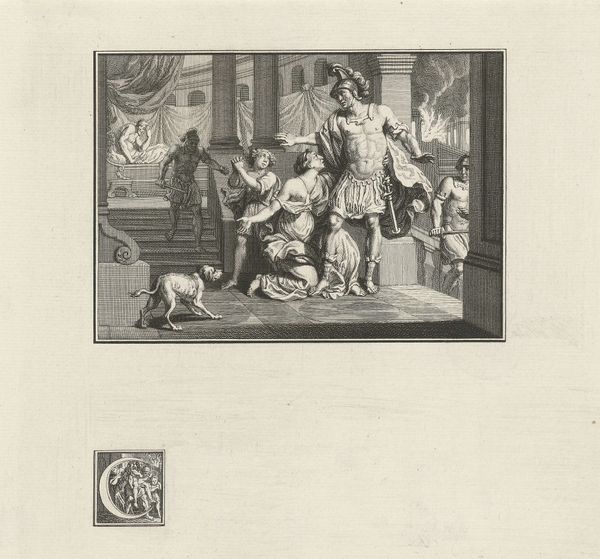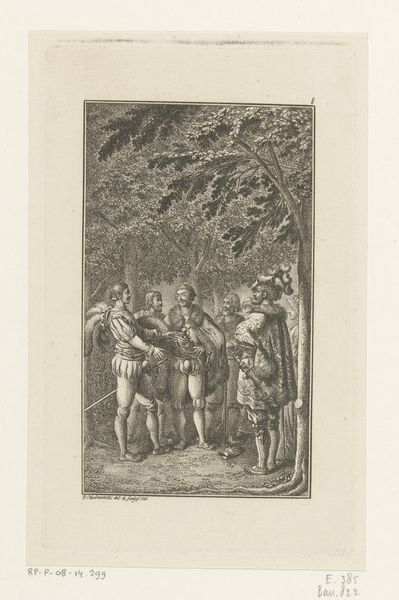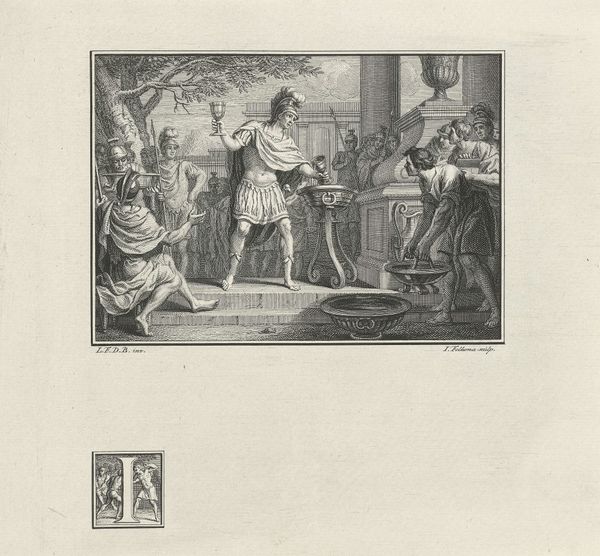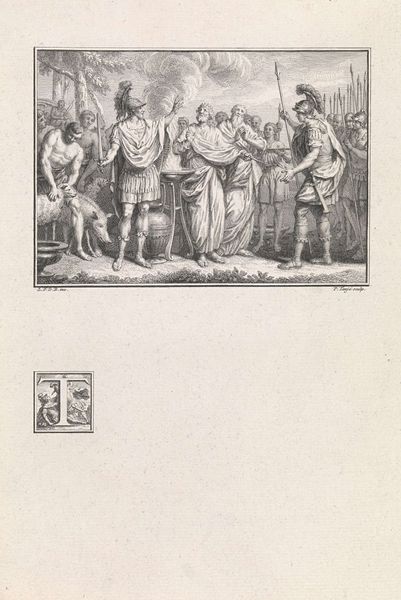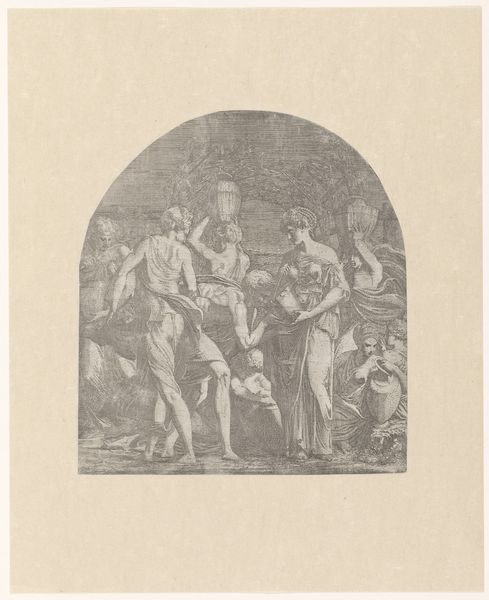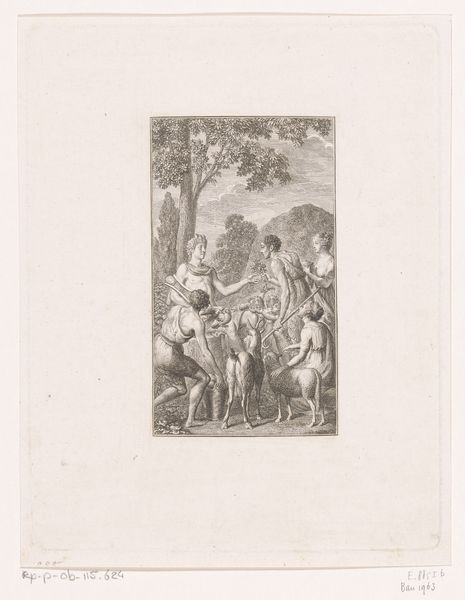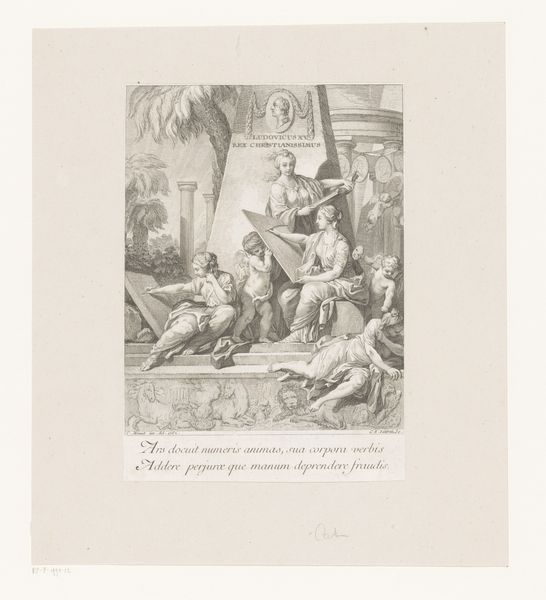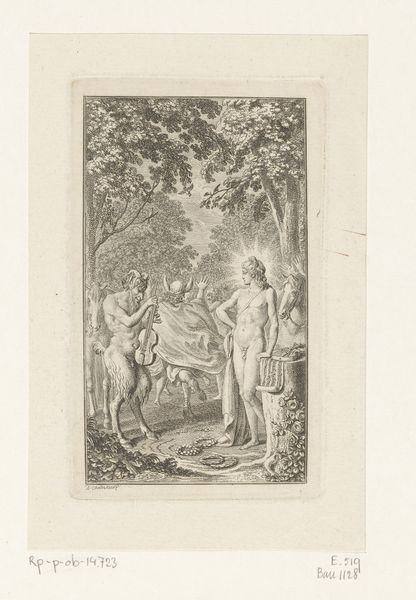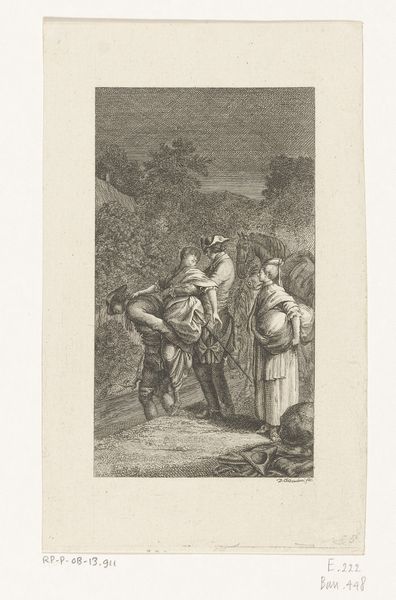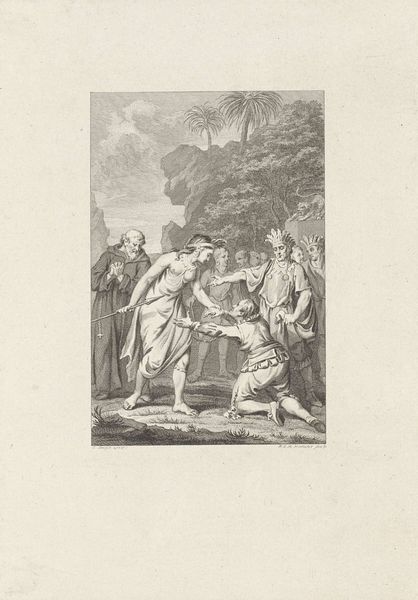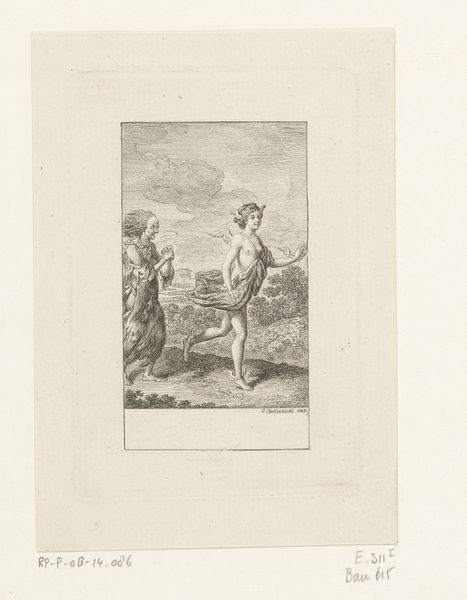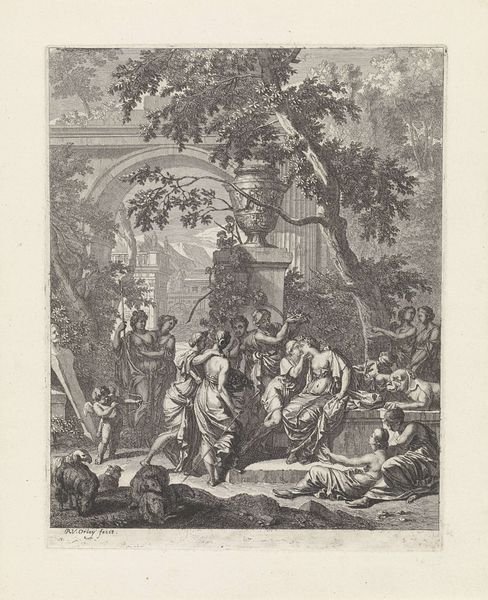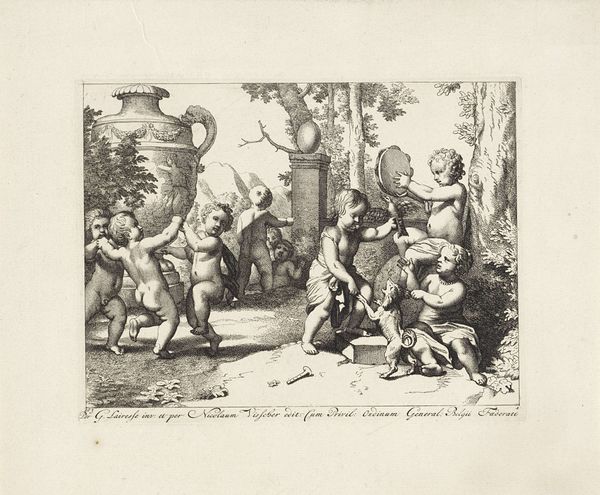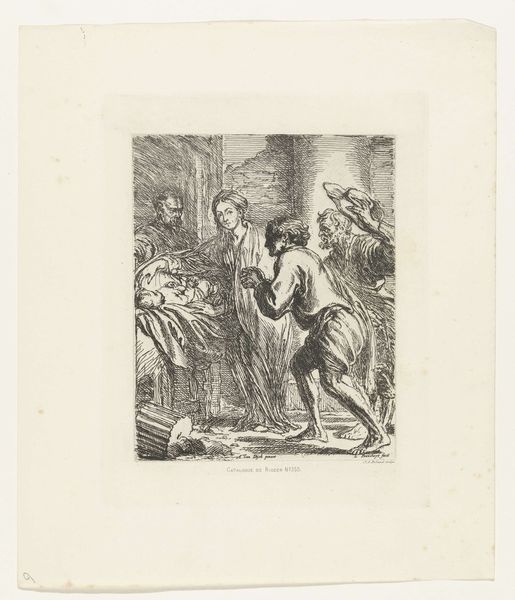
engraving
#
narrative-art
#
baroque
#
old engraving style
#
figuration
#
line
#
history-painting
#
engraving
Dimensions: height 187 mm, width 203 mm
Copyright: Rijks Museum: Open Domain
Curator: Welcome. Here we have "Aeneas and the Sibyl of Cumae", an engraving created sometime between 1703 and 1767 by Jacob Folkema. It's currently held here at the Rijksmuseum. Editor: My first impression is how much is happening. So many figures arranged across the plane. The contrast feels almost stark, the absence of color highlighting every precise line. Curator: Indeed. The composition itself divides into two distinct zones, doesn't it? On one side we observe Aeneas with the Sibyl, positioned as if mediating between realms. Note the classical garb, indicative of the story's origins, rendered with such crisp detail, almost hyper-real through the medium of engraving. Editor: Hyper-real, but also romanticized. This encounter is central to Aeneas’ journey – his consultation with the Sibyl allows him to enter the underworld, to learn his fate. But what power dynamics are at play here? He seeks her guidance, but in the context of his journey towards imperial destiny... isn’t she just a means to his end? Curator: An interesting perspective! From a formal standpoint, consider how the artist uses line to create volume. The drapery of their clothes has sharp linear precision, particularly the folds, giving each figure solidity. The perspective is convincing, providing depth, while at the same time flattening the picture's space through strategic lighting. Editor: The scene feels distinctly patriarchal. There's a cohort of seemingly subservient figures off to the left, and this idea of Aeneas' heroism always carries that shadow. Where are the counter narratives? Whose voices are excluded in the heroic myths of empire? The gaze of this work is so tied to power, and it demands we interrogate that power. Curator: Certainly, the image raises questions. Yet, viewing it solely through that lens might overlook its mastery of line and form. The way the light is captured, the use of shading to create depth... it’s a study in visual skill. But, I take your point. Context changes everything. Editor: It does, and that context is continually shifting. I leave with a feeling of unease, of the burden these images place on our contemporary understandings. Curator: Yes. It gives pause, but invites closer contemplation and questioning on many levels.
Comments
No comments
Be the first to comment and join the conversation on the ultimate creative platform.
